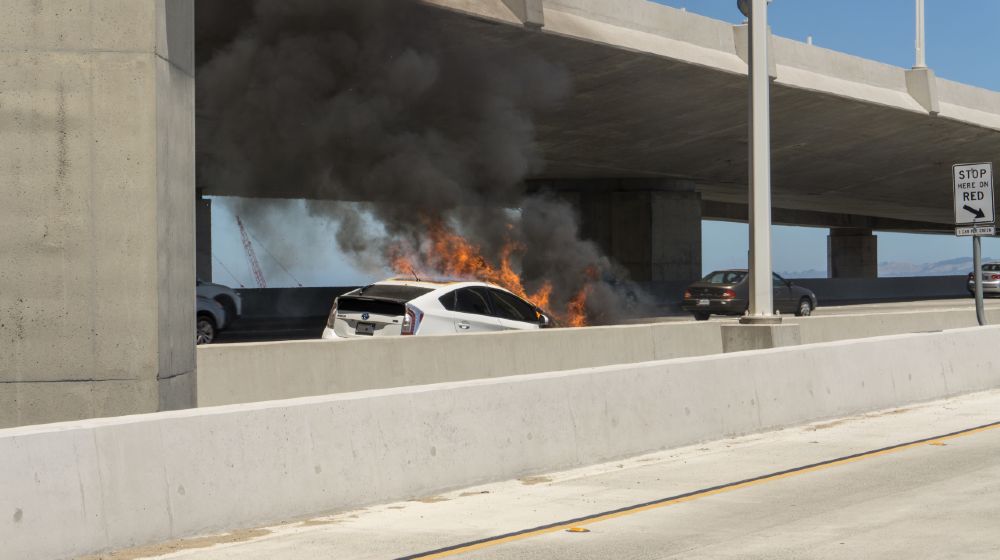News
Regulators Warn Firefighters On Electric Vehicle Fires

Firefighters nationwide are beginning to realize that many are ill-equipped to deal with electric vehicle fires. Like regular cars, EVs have the potential to burst into flames during accidents.
However, many firefighters only know how to deal with regular car fires. As a result, firefighting groups are banding together to learn more about how to address potential EV fires.
RELATED: Tesla Recalls Vehicles Over Seat Belt Safety Issues
Electric Vehicle Fires Are Not The Same As Other Cars
Electric vehicles can trigger longer-burning fires when they crash. They rely on a bank of lithium-ion batteries, which are similar to mobile phone batteries. However, each battery in an eclectic vehicle can power an average American house for two days.
When an electric vehicle ends up in a high-speed accident and catches on fire, damaged energy cells cause temperatures to rise out of control. Consequently, the blaze will require a significant amount of water to put out. Given the large electrical energy storage capacity, these batteries can pose a considerable hazard. In fact, emergency responders have a term for it: stranded energy.
With more EVs arriving on US roads daily, training to deal with their kind of fires is happening fast enough. According to analyst firm IHS Insight, the number of registered electric vehicles reached a record market share in the United States of 1.8%. Experts predict that number to double to 3.5% by the end of this year. By 2025, IHS expects that 10% of the total American automobile market will consist of EVs.
No Adequate Training For Electric Vehicle Fire
At present, most American firefighters have yet to receive adequate training in controlling EV fires. Meanwhile, their European counterparts developed a different approach.
In some cases, their method involved encasing the burning electric vehicle into a converted shipping container or dumpster to prevent further harm. However, Tesla already wrote in their first responder's guide that this method is not advisable. Instead, responders should just douse the fires with lots of water.
Meanwhile, the National Transportation Safety Board published a report that called out the inadequacy of first responder guides from all brands.
The agency further noted that cut loops used to disconnect electrical mechanisms often fail during crashes. In addition, the NTSB also said that first responders generally lack an understanding of how to put out fires caused by electric motors. “The instructions in most manufacturers’ emergency response guides for fighting high-voltage lithium-ion battery fires lack necessary, vehicle-specific details on suppressing the fires,” the NTSB said.
Little Power To Fix The Issue
However, the NTSB has little power to fix the issue. “We do not have any regulatory power, we do not have any enforcement power,” said NTSB spokesperson Eric Weiss.
He pointed out that the authority to change regulations sits with the National Highway Traffic Safety Administration or NHTSA. Lucia Sanchez, a spokesperson for the safety administration, emailed that the agency remains “actively engaged with our stakeholders” and in conducting research on “developing practical strategies for responders.”
Meanwhile, Captain Cory Wilson, a 14-year veteran of Fremont Fire Department, says that firefighters should keep EV safety guides in their trucks. Wilson said that Tesla worked directly with the Fremont fire department for the past eight years. “Tesla has done a good job trying to get first responders educated,” he said.
Watch the Texas A&M Engineering Extension Service (TEEX) video presenting its Firefighting Considerations for Electric Vehicle Fires:
Do you agree that American firefighters need more help and support in dealing with electric vehicle fires? Should the government do more to help firefighters, or should the EV companies do more instead?
Let us know what you think. Share your thoughts below.









